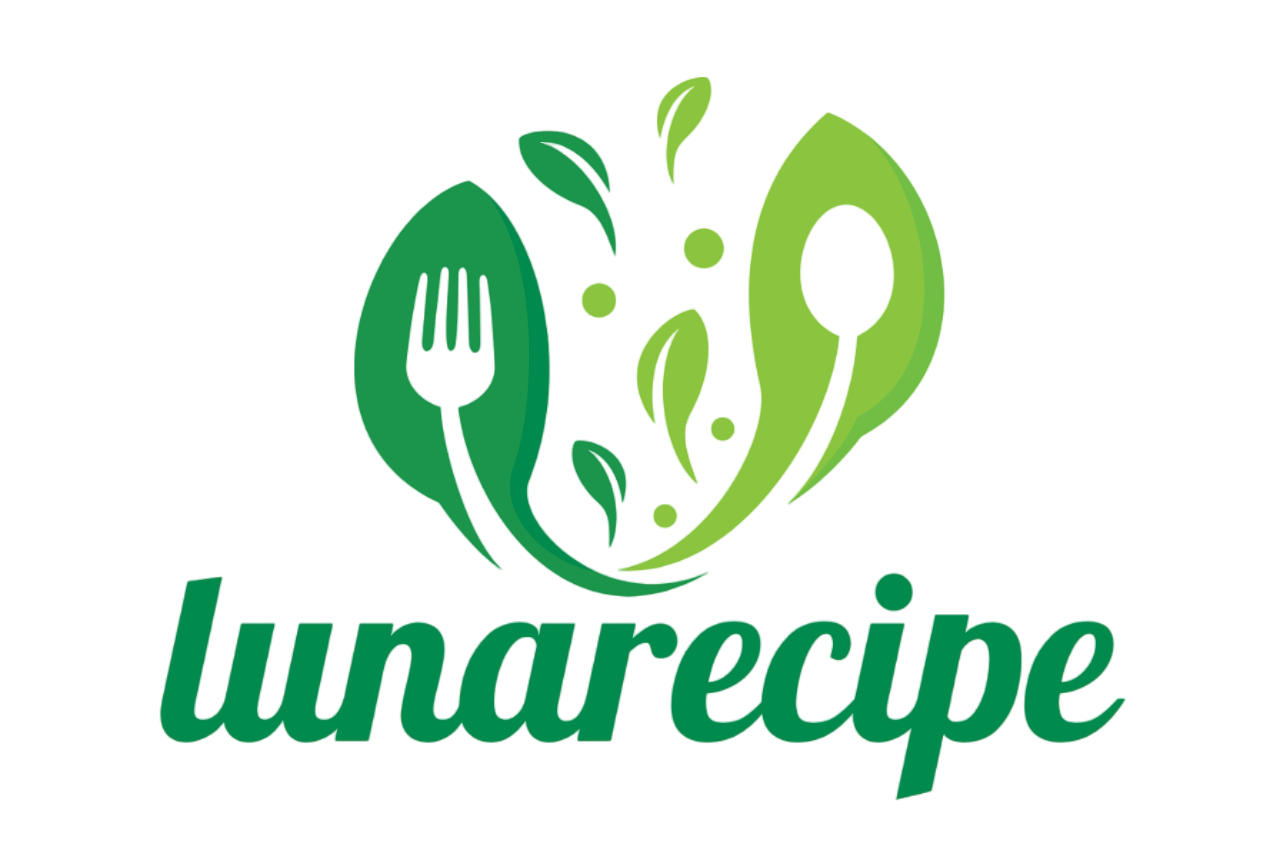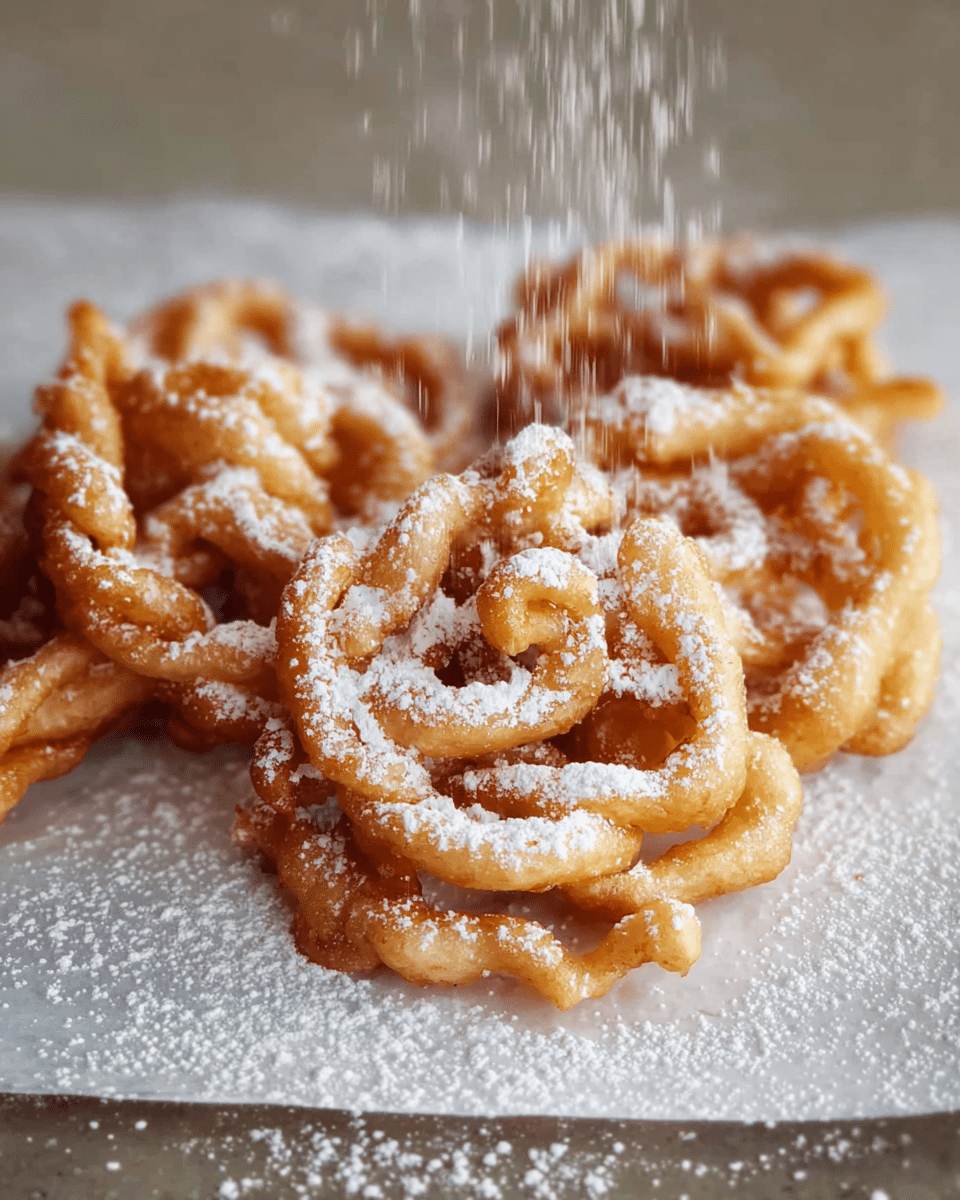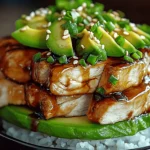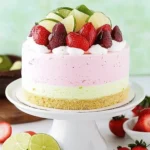The combination of nutty quinoa, fresh vegetables, and fragrant herbs creates a satisfying and flavorful filling for sweet bell peppers.
What’s more, this recipe is easy to customize to your taste and dietary preferences. You can use any color of bell peppers you like, or mix and match for a stunning presentation. You can also add or substitute veggies and herbs, depending on what you have on hand. And if you want to make it vegan, simply omit the cheese or use a plant-based alternative. This dish is perfect for a cozy dinner at home, a potluck party, or any occasion where you want to impress with a healthy and tasty meal.
Full Recipe:
-
2 cups all-purpose flour
-
1 tablespoon sugar
-
1/2 teaspoon salt
-
1 teaspoon baking powder
-
1 large egg
-
1 cup milk
-
1 teaspoon vanilla extract
-
1/2 teaspoon ground cinnamon (optional)
-
4 cups vegetable oil (for frying)
-
Powdered sugar (for dusting)
Directions:
-
In a large bowl, whisk together flour, sugar, salt, baking powder, and cinnamon (if using).
-
In another bowl, whisk together the egg, milk, and vanilla extract.
-
Pour the wet ingredients into the dry ingredients and stir until the batter is smooth and lump-free.
-
Heat the oil in a deep fryer or large pot over medium-high heat to 375°F (190°C).
-
Fill a funnel or squeeze bottle with the batter. Hold the funnel or bottle over the hot oil and carefully drizzle the batter in a spiral pattern, starting from the center and working outward.
-
Fry the funnel cake for about 2-3 minutes on each side until golden brown and crispy.
-
Remove the funnel cake from the oil and drain on a paper towel-lined plate.
-
Dust generously with powdered sugar before serving.
Prep Time: 10 minutes | Cooking Time: 5 minutes | Total Time: 15 minutes
Kcal: 220 kcal | Servings: 4 servings
History and Origin
The origins of funnel cake can be traced back to Europe, where similar fried pastries have existed for centuries. One of its earliest incarnations, called Strauben or Strauben cake, dates back to medieval Germany, where it was served during festivals and special occasions. Over time, this concept spread across Europe and was adapted to different cultures.
In the United States, funnel cake became especially popular at fairs and carnivals, largely due to the rise of amusement parks and traveling food vendors in the 19th and 20th centuries. By the early 1900s, funnel cakes were a staple at outdoor events, where their quick cooking time and satisfying sweetness made them a favorite treat for festival-goers. The name “funnel cake” itself is a nod to the method of pouring the batter through a funnel to create its signature lacy appearance in the hot oil. In the U.S., funnel cake became a quintessential symbol of fairground food, with many people having it on their “must-try” list whenever they visited a fair or carnival.
Today, funnel cake is not only enjoyed at fairs but is also a beloved homemade treat, bringing joy to kitchens and family gatherings. Whether you make it in your own deep fryer or opt for a more modern version, the timeless appeal of this crispy, sugary dessert has endured across generations.
Variations and Adaptations
Funnel cake has numerous variations, depending on where it’s being made and who is making it. The classic American version is typically dusted with powdered sugar, but around the world, the recipe often varies to incorporate local flavors or to provide different twists on the beloved treat.
In some regions of the United States, funnel cakes are topped with additional ingredients like chocolate syrup, fruit, or whipped cream. These variations are often found at more modern fairs or amusement parks where food vendors have developed creative ways to elevate the traditional funnel cake. Some even add ice cream on top of the fried dough, turning it into a decadent dessert that’s perfect for hot summer days.
In Europe, funnel cakes have also taken on different names and forms. The aforementioned Strauben is a German version of funnel cake, often served with a dusting of cinnamon and sugar. In Portugal, Fogaça is a similar deep-fried cake made in large, flat circles and sprinkled with sugar. The funnel cake’s European roots can be clearly seen in these variations, which highlight local preferences for spices or fruits.
In some countries, the idea of funnel cake has been taken even further. In parts of South America, for example, churros can be considered a cousin of funnel cake. These fried dough pastries are often shaped into long sticks, dusted with sugar, and filled with chocolate or caramel sauce. While not exactly the same, churros share a similar concept of fried dough with a sweet coating.
Another variation gaining popularity in recent years is the savory funnel cake, where the sweetness is replaced with savory seasonings such as garlic powder, herbs, or cheese. This savory version is often served with dipping sauces like marinara or ranch dressing, offering a new twist for those who prefer their fried foods without the sugar rush.
Nutritional Information
Funnel cake, while delicious, is certainly a treat best enjoyed in moderation due to its indulgent ingredients. When made traditionally, funnel cakes are deep-fried, meaning they can be high in fat, calories, and sugar. A typical serving of funnel cake (without any toppings) can contain roughly 220 to 300 calories, depending on the size of the cake and the exact ingredients used.
The main contributors to the calorie count in funnel cake come from the batter, which is primarily made of flour, eggs, milk, and sugar. The oil used for frying also adds a significant amount of fat, particularly saturated fat. However, it’s worth noting that the nutritional breakdown can vary significantly depending on how the funnel cake is prepared.
In terms of macronutrients, a funnel cake typically contains around 25 grams of carbohydrates, 10 grams of fat, and 2-4 grams of protein. The sugar content can be quite high, especially when topped with powdered sugar or other sweet additions, which can contribute to a spike in blood sugar levels.
On the micronutrient front, funnel cakes offer minimal amounts of vitamins and minerals. While they may provide small amounts of calcium and iron from the milk and flour, they are not considered a nutrient-dense food. However, if you’re looking to make a healthier version of funnel cake, you can opt for substitutions like whole wheat flour or a lighter oil, and reduce the amount of sugar used.
Serving Suggestions and Pairings
Funnel cake is a versatile dessert that can be served in a variety of ways, making it a fun treat to enjoy with friends and family. For a classic approach, dust your funnel cake with a generous amount of powdered sugar just before serving. This simple topping lets the crispy texture of the cake shine through.
If you’re looking to elevate your funnel cake, try adding a drizzle of chocolate or caramel sauce, fresh berries like strawberries or raspberries, or a scoop of vanilla ice cream. For an extra indulgent experience, whipped cream and a sprinkle of chopped nuts, such as almonds or pecans, can bring additional texture and flavor to the dessert.
Funnel cake can also be served alongside other carnival-inspired treats, such as cotton candy, popcorn, or corn dogs, for a fun fairground-inspired spread. Pair it with a refreshing iced tea, lemonade, or a cold soda for a perfect summer snack.
For a more savory twist, funnel cakes can be topped with savory herbs, cheese, or even a drizzle of olive oil. You can also serve them alongside a savory dip, like marinara sauce, to complement the flavor profile. The possibilities are endless when it comes to customizing this dish to your preferences.
Tips and Tricks for Success
-
Consistent Batter: Make sure your batter is smooth and free of lumps. This helps to create that perfect lacy texture when it’s fried.
-
Right Oil Temperature: The oil should be around 375°F (190°C) to ensure the funnel cakes cook evenly and become golden brown without absorbing too much oil. Too hot or too cold oil can lead to uneven frying.
-
Use a Funnel or Squeeze Bottle: For that signature spiral shape, it’s important to use a funnel, squeeze bottle, or pastry bag. This allows you to control the flow of the batter and create the perfect swirl.
-
Don’t Overcrowd the Fryer: Fry one funnel cake at a time to avoid overcrowding the fryer, which can cause the cakes to stick together and not cook evenly.
-
Dust with Powdered Sugar: After frying, dust your funnel cakes with powdered sugar while they are still hot to ensure it sticks and adds that classic sweetness.
Potential Health Benefits
While funnel cake is certainly a treat, it can offer a small dose of energy from its carbohydrates and a bit of protein from the milk and eggs in the batter. Additionally, if you use healthier oils, such as avocado or coconut oil, the dish can have a slightly better fat profile, though it’s still a deep-fried dessert.
Advertisement
Funnel cake may also provide a bit of happiness, as indulgent foods like this can release feel-good chemicals in the brain, promoting a sense of joy and satisfaction. Eating it occasionally, especially when paired with friends and family, can also promote social connections and overall well-being.
However, because of its high sugar and fat content, funnel cake should be enjoyed as a special treat rather than a regular part of your diet.
Conclusion
Funnel cake is a fun, nostalgic treat that continues to delight people of all ages. Its crispy, golden exterior and sweet powdery coating make it a favorite at fairs and festivals, but it’s easy to recreate this classic dessert at home. With endless possibilities for toppings and variations, funnel cake is a versatile dessert that can be adapted to suit any taste. Whether you enjoy it the traditional way or with a modern twist, there’s no denying that this crispy, fried treat will always be a crowd-pleaser. So, gather your ingredients, fire up the fryer, and treat yourself to this indulgent fairground favorite—your taste buds will thank you!






